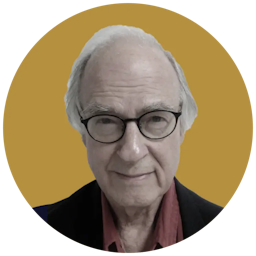Memories of Korea’s Jeju Massacre Echo Amid Lingering Shadows of War
As the island mourned the dead, American, South Korean, and Japanese warships staged exercises in nearby seas in the latest show of force in three weeks of exercises.

Memories of one of Korea’s bloodiest massacres haven’t faded, even generations after police and army soldiers slaughtered thousands on the Korean peninsula’s southernmost island.
On the 75th anniversary of what is known on the island of Jeju, 60 miles south of the mainland, simply as “4.3,” for April 3, 1948, the date of the outbreak of the killing, thousands of members of bereaved families gathered in remembrance. Conservative protesters claimed they’d been influenced by North Korea while the shadows of war hang over the country.
As the island mourned the dead, American, South Korean, and Japanese warships staged exercises in nearby seas in the latest show of force in three weeks of exercises.
The aircraft carrier USS Nimitz led the war games, its fighter planes flying off the deck, coordinating with fighters from Korea and Japan while Aegis-class destroyers from all three navies simulated searching for enemy submarines. It was the first time in seven years that they have worked together in such exercises.
On Jeju’s southern coast, on the opposite side of the island from the memorial, South Korean naval forces supported the exercises from a small base that opened nearly seven years ago after years of demonstrations. A Catholic priest even now leads daily protests and prayer services outside the gates.
“But now we’re more concerned about plans for opening a new airport on the island,” said a tour guide, Chon Young-mi, who leads visitors to the scenes of the slaughter that killed about 30,000 people on the island before the Korean War.
A new airport, not far from an old Japanese air base, is needed, government officials say, to accommodate the enormous crowds that stream onto and off the island via the modernized airport on the northern coast. Jeju is by far South Korea’s most popular tourist destination, but few visit the peace memorial and cemetery honoring the victims of the massacre.
“We don’t forget,” Ms. Chon said, “but most people come here for vacation.” Tourism is by far the biggest source of income for the 700,000 residents of the island from which heavy industry is banned.
Looming nearly 2,000 meters above the center of the island, Mount Halla is South Korea’s highest peak. The miracle of Jeju is that large oranges and tangerines grow in the groves far below while tourists venture onto sandy beaches.
On the anniversary of the outbreak of the Jeju massacre, Korea’s prime minister, Han Duck-soo, and Jeju’s governor, Oh Young-hun, spoke of the need for reconciliation. They promised government support for families still grieving.
Several days earlier, a North Korean defector, Thae Yong-ho, now a member of South Korea’s national assembly, outraged local citizens by saying he had evidence that North Korea had infiltrated Jeju after World War II.
Mr. Thae said the North Korean regime, then led by its founder, Kim Il-sung, grandfather of the current leader, had forced the government to crack down harshly.
Members of what’s known as the Northwest League, made up of rightists from the Korean mainland, strung up banners blaming local communists for inciting the police. The communists found fertile ground, they believed, since 60,000 Japanese troops had been based on the island in anticipation of an American invasion before Japan surrendered.
Local authorities tore down the banners while the North Korean leader, Kim Jong-un, ordered more missile tests and threatened to ignite a second Korean war with tactical nuclear weapons.
During the memorial service, relatives of those who had died cleaned and polished memorial tablets bearing the names of loved ones. Residents blamed the Americans for siding with the police and army soldiers in the runup to the Korean War. Archives in Washington, they said, showed evidence of the American role.
In fact, only about 50 American advisers were on the island during the massacres, and there’s no evidence they encouraged the killing.
Nonetheless, a local residents’ association is demanding “reparations” while most visitors enjoy the wonders of one of Asia’s most popular tourist destinations. Jeju airport is Korea’s second busiest after the Seoul-Incheon International airport.
Before the airport was expanded, Ms. Chon says, the bones of several hundred victims were discovered on the site. Many more remains lie beneath the concrete, she believes, out of reach of efforts to dig them up and place them among the 15,000 already buried at the memorial.

